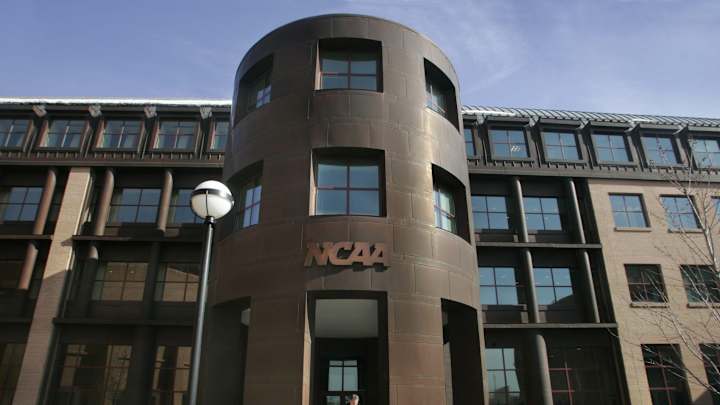Should the NCAA Waive the 25-Player Scholarship Limit?

INDIANAPOLIS - If the NCAA allows for college football programs to go beyond 25 or 32 players in a recruiting class, it will have positive results, as well as negative results, if it does not plan accordingly.
Traditionally, 25 is the number of players allowed in one recruiting class, while 32 was instituted last October to help high school players struggling to gain scholarship offers with college programs instead favoring more experienced players from the Transfer Portal. Now, the NCAA is considering a move to remove the limit altogether, for two years, based on what has now become numerous reports.
With that in mind, two specific positives, as well as a few negatives if the NCAA is not careful, will likely come from this possible new rule that is under consideration.
The Good News
**Many high school players will gain relief from the issues that extend from the Transfer Portal. Many college programs are bypassing high school prospects for more experienced and physically developed college transfers via the Transfer Portal. It’s placed many really good players with no college destination that in year’s past would have likely signed a college scholarship to play football.
**For any particular roster that is in major flux because of a coaching change, or simply lost several players to the Transfer Portal, or for whatever the reason, this rule would help in the short term. Adding even two, perhaps three, additional players could solidify a position and/or a depth chart and roster.
Both of these situations are very important to keep fairness and balance involved. There are also potential concerns with lifting the scholarship limits for a recruiting class during a two-year period.
The Bad News
*Programs and coaching staffs that are determined to win and win now are likely to cut additional players from scholarships (they already cut some, as pathetic as it may be) so they can then go out and recruit what they personally consider to be better options. Point blank, anyone that does not think a team in the highly competitive SEC or B10 or Big XII would not chop off a few scholarships so that they can add more talent to the roster while the unlimited scholarship rule in recruiting is available is foolish.
Therefore, it is imperative that the NCAA also institute a parallel rule that openly and publicly states that teams cannot cut players during this two-year period without some sound reason (legal trouble, etc.). If the NCAA does not do so, it’s probably going to find itself in a heap of public trouble via media outlets, parents and players speaking out about it during interviews and on social media, et al. It’s also likely that lawsuits from players that do get cut band together and sue the NCAA because of the new rule.
In short, this will get ugly unless the NCAA places an additional rule in place before the other rule goes into effect. This is a huge sticking point and one that the NCAA cannot miss on (but probably will based on its poor oversights in recent years).
**Hoarding. Many programs flat out hate one another. It’s just a fact. Pick a state with a big rivalry game as an example. If a team can take a few extra in-state prospects away from the other team, even if it does not truly want to utilize their talents for themselves, it’s quite possible it will happen. Before the days of scholarship limits, this practice was commonplace.
It happened at numerous schools. Coaches just wanted to minimize the competition. It’s pathetic, but some coaches are still likely to be that pitiful. Some coaches simply do not care that the recruit has a good college experience and/or actually has a shot to play at the specific school they coach for, but rather it’s all about keeping the rival from getting a potentially helpful player that will allow them to win more games.
Side Point
**Recruit well, win in the short term, then take the paycheck and move forward. At some programs, it’s been difficult to win, historically speaking. However, If a group of coaches at a school that’s typically at the bottom of the conference standings wins big for two years just so they can cash in, is it good, bad or indifferent?
If a program can bring in two massive back-to-back recruiting classes, in a couple of years it will likely have an experience advantage at the very least. After winning and seeing those players run out of eligibility, those coaches will probably look to move to a bigger brand name school and take the paycheck that comes with it.
One can argue good or bad about this scenario. Have at it either way. At least the school fan base would have something to cheer about for a while. That’s one way to look at it.
Overall, there need to be some serious discussions about what this potentially imposed rule could create, unintentionally, and actually create scenarios that lessen the sport. There’s some good, yes, but without very specific and timely additional rules regarding cutting scholarships during that time, the NCAA could create a big issue for itself and many others as well.
UCF Recruiting News and Prospect Profiles
Evaluating the State of Florida's Special 2023 WR Class
Ranking Florida's Top 100 High School Football Prospects for the Class of 2023
Can UCF, FL, FSU and Miami Keep Top Florida HS Football Recruits at Home?
Inside The Knights: YouTube - Facebook - Twitter - Spotify - Apple - Instagram
College Football Recruiting Coverage: YouTube - Facebook - Twitter
Recent Articles From Inside The Knights
Big Visits Starting to Line Up for UCF Football
Prospect Profile: 2023 RB Jordan Louie
Recruiting Run Down for May 5th
Talking FSU with NoleGameday Writer Dustin Lewis
NIL and the Transfer Portal: Which Schools Get Caught Cheating?
